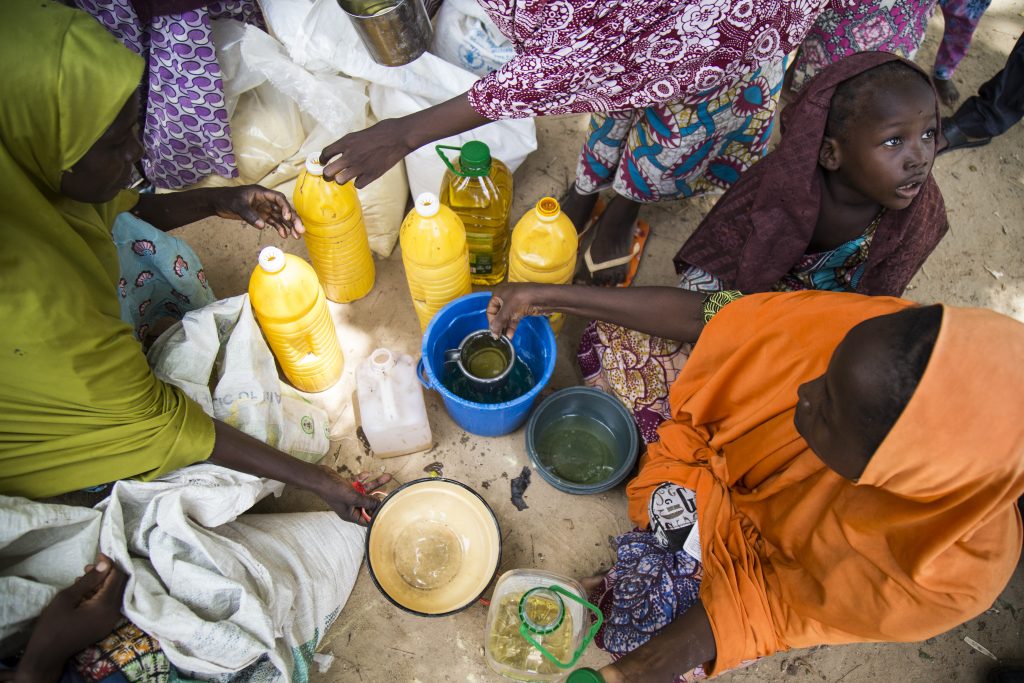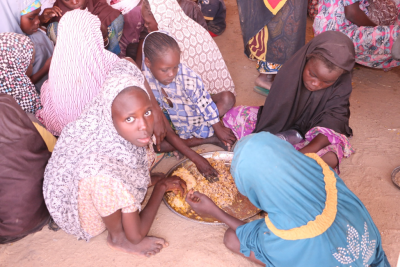
Food Security
Nutrition & Food Security
Understanding Food Security
National governments and international organizations are paying closer attention to the importance food security. For example, food security aligns closely with the first two of the 17 United Nations Sustainable Development Goals targeted for achievement by 2030. Food security is considered a cornerstone of good health, national security and development. However, the impacts of the COVID-19 pandemic, climate change and armed conflict have reversed years of development gains, increasing the number of those facing acute food insecurity.
Amid this dynamic, food security is now accepted as a global imperative, a “must” necessary to stem the growth of malnutrition, hunger and poor health in parts of the world. The absence of food security also can contribute to civil unrest.
Four conditions are needed to ensure food security: availability, access, sufficient nutritious content and stability of supply.
- Availability of food includes the supply side of food security. It depends on national stock levels, the level of food production, imports and food assistance or aid. An adequate supply of food at the national or international level does not in itself guarantee household-level food security.
- Access to food includes either a retrievable harvest or sufficient income, as well as transportation resources that provide people with appropriate food at affordable prices.
- Nutrition depends on the way that the body processes the various nutrients in the food. It involves a variety of factors, including good drinking water, an hygienic environment, and good preparation and feeding practices.
- Stability of the three factors above over time are essential for people to be able to withstand shocks and stresses, such as climate changes, political instability or sharp increases in food prices.
Drivers of Global Food Insecurity
Food security is threatened when disruptive events, such as armed conflict, natural disasters or other unexpected changes, cause sharp drops in food production. For instance, desert-locust and army-worm outbreaks in East Africa and the Sahel, and conflicts in the Middle East, have resulted in significant food shortages. The recent global outbreak of COVID-19 and subsequent containment measures have disrupted food-supply chains, resulting in reduced incomes and new vulnerabilities that limit access to food. Food insecurity becomes an issue where poverty affects the ability to produce sufficient food.
Food security also is threatened by longer-term demographic trends. By 2050, the world’s population is estimated to rise to 9 billion, from 7.8 billion in mid-2021. Much of this growth will occur in developing countries, especially in the urban areas of Asia and Africa, as migration from rural areas continues in many regions. Demographers project that by mid-century two-thirds of all global citizens will live in cities. The expected growth of mega and secondary cities has implications for food security—especially in Asia, where its impact will be exacerbated by an aging population. The drift toward urban centers is led by male youth in search of better opportunities, and brings with it new demands for resources already stretched in urban areas, including land, water and energy. As cities expand, arable lands will disappear as they are covered by human settlements created to absorb population growth.
Gender inequalities still abound in many countries facing food insecurity today. Though women play an important role in food production, formidable cultural barriers in many countries prevent their full contribution in the quest to achieve food security. In developing countries, as many as 40% of women are engaged in agriculture, yet they are often denied access to credit, basic information and knowledge of modern production technologies. Even at the household level, women are frequently excluded from decision-making issues affecting food security, such as what to grow and how best to utilize the harvests.
Our Response
NIGERIA: Food Assistance
In response to the humanitarian crisis in northeastern Nigeria, we have worked since October 2016 in partnership with the World Food Programme (WFP) to provide food assistance, including general food distributions, to about 200,000 people living in displacement camps and host communities in the region. The program also offers blanket supplementary feeding to children under 5 to prevent malnutrition, as well as cash payments (using mobile money and e-vouchers) to cushion vulnerable urban area residents from the socio-economic effects of COVID-19 and help them access food and rebuild their livelihoods.
YEMEN: Livestock replenishment
With support from the Gates Foundation and USAID’s Bureau of Humanitarian Affairs, we have distributed 3,600 sheep and goats to more than 1,200 households whose farm animals were lost to war and whose children struggle with severe or moderate acute malnutrition. The new animals have helped these households rebuild their livelihoods and improve their access to nutritious animal-source food. We have also undertaken large-scale veterinary vaccination, deworming and treatment campaigns, in partnership with the Yemen Veterinary Service, to protect the livestock from depletion and teach herders the latest animal production techniques. In addition, we have provided households with livestock feed to address micronutrient deficiencies in their animals.
SOUTH SUDAN: Women’s Economic Empowerment
With funds from Britain’s Foreign, Commonwealth & Development Office, we are implementing the Humanitarian Assistance for Resilience in South Sudan (HARISS) project, which has helped some 1,780 survivors of gender-based violence. The project supports microentrepreneurial development through business-development training and cash grants. It also provides assistance to establish village savings-and-loan programs to strengthen family incomes, enhance women’s participation in household decision making and add to livelihoods.
ETHIOPIA: Nurturing Nutrition Sensitive Food Security and Livelihoods Interventions
As part of USAID’s Feed the Future Ethiopia Value Chain initiative, we have prioritized nutrition-sensitive agriculture activities in five selected agriculture areas—coffee, maize, chickpeas, dairy and poultry—to encourage nutrition and women’s dietary diversity for small farmers and other small landowners. In partnership with seven international donors, we also provide nutrition, livelihoods and food-security assistance to refugees, returnees and local host communities, using vegetable production and fresh-food vouchers to complement our efforts to reduce malnutrition. In addition, we provide vocational-skills training and an entrepreneurship program for youths who face intermittent forced migration to escape armed conflict and political instability in the country’s Somali region.


Nearly 690 million people suffer from chronic hunger around the world. This number is expected to increase by 840 million by 2030 due to the compounding effects of COVID-19, climate change, conflict, pests and animal diseases.
As many as 2 billion people globally suffer from what is termed “the hidden hunger”—micronutrient deficiencies. This can lead to poor health, mental health impairment, low productivity, reduced socioeconomic development and death.
By 2050, the world will need to increase agricultural production by at least 60% to feed a projected global population of 9 billion people.